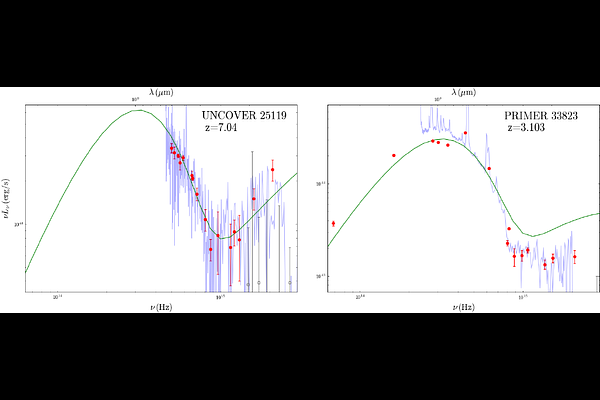The Composite Spectrum of the Little Red Dots from an Inner Standard Disk and an Outer Gravitationally Unstable Disk

The Composite Spectrum of the Little Red Dots from an Inner Standard Disk and an Outer Gravitationally Unstable Disk
Chenxuan Zhang, Qingwen Wu, Xiao Fan, Luis C. Ho, Jiancheng Wu, Huanian Zhang, Bing Lyu, Xinwu Cao, Jianmin Wang
AbstractOne of the most mysterious results from observations of the James Webb Space Telescope (JWST) is the detection of numerous, high-redshift, very red, extremely compact, broad-line sources termed ``little red dots'' (LRDs). It is unclear whether the LRDs belong to an active galactic nucleus (AGN) or simply a collection of very compact star clusters. We build spectral energy distributions (SEDs) for 29 LRDs at $z \approx 3-8.5$ based on JWST photometric and spectroscopic observations. We find that the V-shaped SEDs of these LRDs exhibit a roughly similar break frequency at $\nu_{\rm b}=10^{14.96\pm0.06}$ Hz, which corresponds to $\lambda_{\rm b}=3287_{-424}^{+487} \text{\AA}$ in the rest frame. We propose that this unique SED can be explained by the combination of an inner standard disk and an outer gravitationally unstable accretion disk with Toomre parameter $Q\sim1$. The outer disk has a temperature of $\sim2000-4000$ K for typical AGN parameters, which can well reproduce the near-infrared to optical bump as observed in LRDs. This model can naturally explain the strong infrared to optical emission and the V-shaped SED with a similar break frequency $\simeq 10^{15}$ Hz for LRDs without invoking strong dust extinction or unusual stellar contribution from a host galaxy. Most LRDs stay in sub-Eddington state based on the SED modeling, which are intrinsically weak in X-rays.